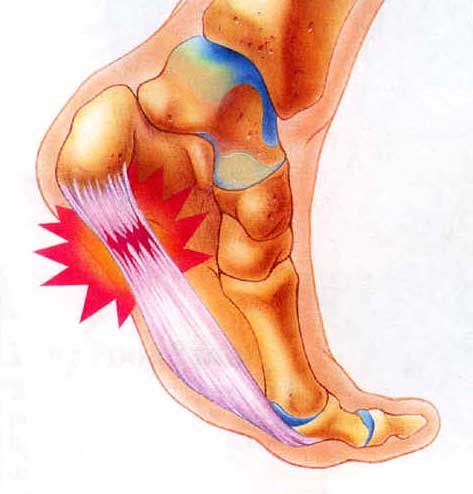| Plantar Fasciitis is the most common cause of Heel Pain and affects approximately 2 million people every year. Plantar Fasciitis is particularly common in those who walk, stand, or run for long periods of time, especially on hard surfaces. People who are overweight, women who are pregnant, people whose feet are hyperpronated (flat footed), and those who wear shoes with inadequate support, are also prone to Plantar Fasciitis. Excessive Tension in the Lower Leg Muscles has also been found to be a strong contributing factor. Plantar Fasciitis is usually identified by Pain with the first few steps of the day, or after a prolonged rest. |
Trigger Points in the Soleus, Gastrocnemius, Tibialis Posterior, Abductor Hallucis, and the Flexor Digitorum Longus Muscles can all refer pain into the bottom of the foot. Though this referred pain is not yet Plantar Fascitis, the untreated tension in these muscles can lead to strain and inflammation of the thick band of connective tissue that extends from the heel to the toes known as the Plantar Fascia. When the strain on the Plantar Fascia causes it to become inflamed, the pain experienced in the bottom of the foot even after resting is known as Plantar Fascitis.
NeuroMuscular Therapy will help to alleviate the pain in the bottom of your foot, even if it has progressed to Plantar Fascitis, by locating which Muscles/Trigger Points are the cause, reducing the tension in these muscles, speeding the repair of torn tissue, and releasing the Trigger Points..
Back to List: |
 |
















